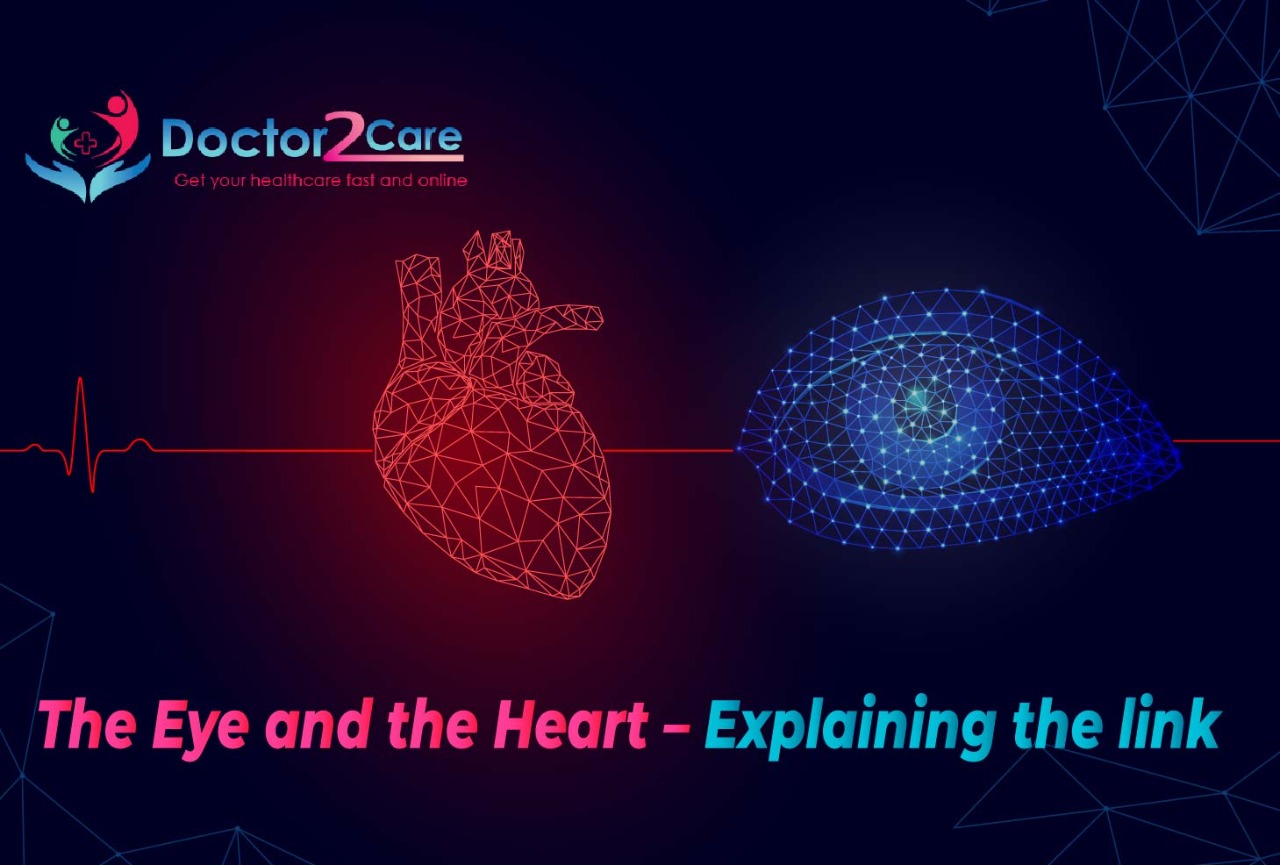The Eye And The Heart – Explaining The Link

In case you have been living under the rock, you mustn’t have been aware that some eye and cardiovascular diseases share the same underlying mechanisms. You can get in touch with an ophthalmologist or cardiologist online to add more precision to the same.
Identifying and retorting to these interlinks can help patients avoid critical conditions and complexities. In this article, we would like to lend light to the shared pathways of diseases, the shared risk, the treatment, and the signs of shared risk factors.
Let’s have a look –
Shared pathways
Studies have shown a concrete connection between eye and carotid ailments. Diseases like atherosclerosis if detected in the carotid vessels, the patient is more likely to be suffering from diabetic retinopathy and AMD.
Besides, atherosclerosis can also lead to cholesterol build-up in the retina, increasing the chances of AMD in the patient. Also, ageing macrophages get rid of fat deposits beneath the retina that gets bloated with cholesterol. This causes inflammation in the retina forming new blood vessels and leading to vision loss.
This inflammation is a central pathway for eye conditions and cardiovascular diseases. Besides, proteins such as the C-reactive protein responsible for inflammation are also allied with wider retinal venules and heart diseases.
Adept healthcare specialists also shared that though these retinal vessels may mark similar changes in the heart, it is too small or premature to consider them as a clinical testing tool in estimating the risk of heart attacks or diseases. Several factors, also physiological, including blood flow and blood oxygenation may lead to the narrowing or widening of these vessels and hence cannot assure quality detection of heart attack risks. With the advancement of technology, sooner these changes can be evaluated.
Shared risk
Some of the well-known factors contribute to the shared pathways of these diseases. These may include elevated lipids in the blood, hypertension, and plenty others.
Let us learn more…
- Lipids
There are consistent data that explains the relationship between lipids and eye diseases as well as lipids and cardiovascular diseases. The proteins and enzymes responsible for controlling lipid levels are also a regulator of the underlying pathways of cholesterol metabolism. An increase in cholesterol or lipid levels can lead to eye disorders that can get critical over time.
- Obesity
Weight is just the tip of the iceberg, obesity may include lipid metabolism, fatty deposits, genetic predisposition, inflammation and other such conditions that are likely to contribute to critical eye disease as well as cardiovascular diseases.
- Hypertension
Hypertension is quite common today and the prevalence can be seen increasing among teens. As hypertension increases the risk of heart diseases, it also contributes to several eye disorders such as BRVO, diabetic retinopathy, and more. Some of the leading medical researchers have claimed that the risk of vein occlusion nearly triples for those with complications raised from hypertension (nephropathy or neuropathy). Apart from the mentioned, there are other eye diseases as well that holds a connection with blood pressure and oxygenation such as glaucoma and more.
- Metabolic syndrome
Metabolic syndrome has shown signs of increasing the signs of heart disorders. Metabolic syndrome is also associated with retinopathy and eye syndrome such as cataracts, elevated IOP and more.
- Cigarette smoking
Smoking has always been associated with effects on blood vessels. Smoking increases the chances of heart disease, stroke, AMD and others. Besides, eye syndrome tends to worsen in the case of smokers.
- Signs of shared risk
To detect, here are some signs of shared risk to look out for –
- Emboli and occlusions
- Ischemic events
- Changes in microvasculature
Other signs may include yellow patches around the eye (xanthelasma), common in people with uncontrolled lipid levels. Xanthelasma also increases the chances of heart diseases. People with uncontrolled hypertension also may show signs of flame-shaped haemorrhages, exudation, and swelling as stated by the leading ophthalmologist. Hypertension also leads to cardiovascular diseases, sleep apnea and other such syndromes.
Shared treatment
With shared risks, physicians suggest potential shared treatment that may help in combating both. Treatment normally used for cardiovascular diseases is now being used for the treatment and prevention of eye diseases. Some of the shared treatments may include –
- Fenofibrates
- Statins
- CETPIs
Nevertheless, you can opt for the best online ophthalmology consultation to discuss your symptoms. If suggested, you can also opt for a cardiologist consultation as required to understand the right way to deal with your situation.
Given that a close relationship can be found between eye disorder and heart diseases in terms of lipid levels and hypertension, it is recommended to control lifestyle to combat these conditions.
Practising a healthy lifestyle, a balanced diet and avoiding smoking and alcoholism can help in battling heart and eye disorders and other ailments. It is important to keep in constant touch with your physician. You can opt for online platforms like Doctor2Care to ensure seamless doctor consultation online at the comfort of your home.
Register today!